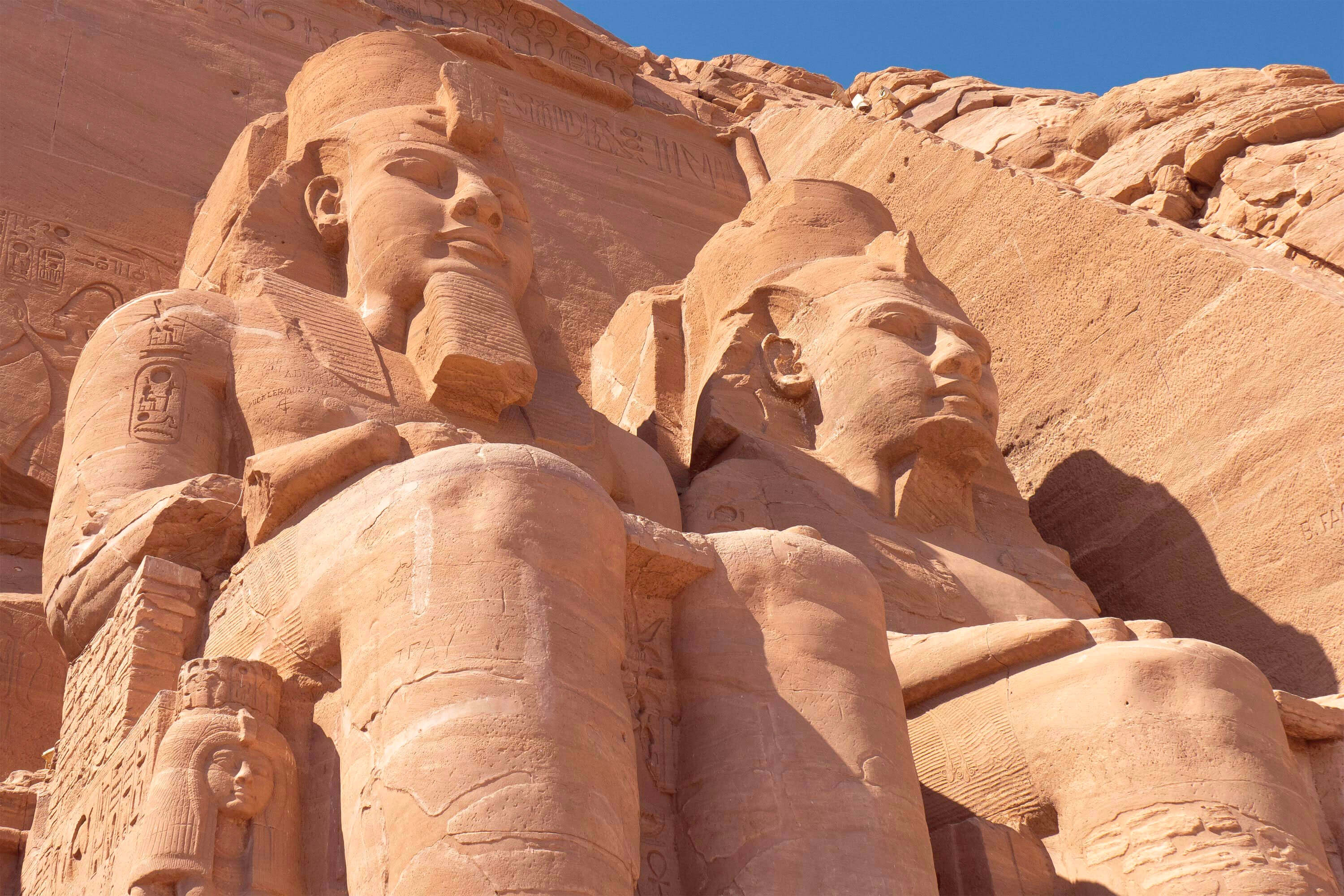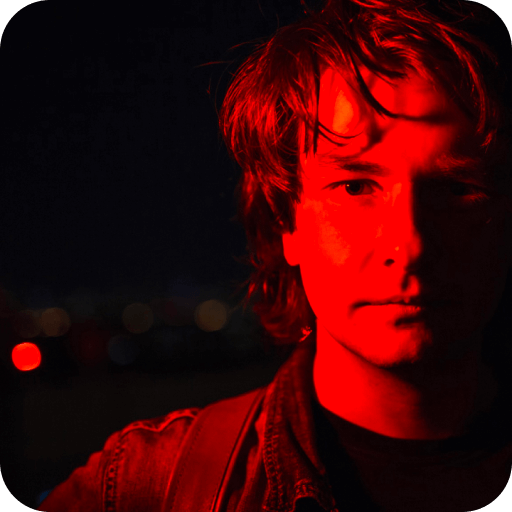Abu Simbel
Ramses the Second is considered one of the greatest pharaohs of Ancient Egypt. The reader has already heard about him from the story about Luxor. He is that very show-off pharaoh who erased the names of other pharaohs and placed his statues in temples that he did not build.
Although Ramses won several military victories, much of his greatness was built on public relations. It seems that Ramses was the first dictator to use propaganda for a personality cult.
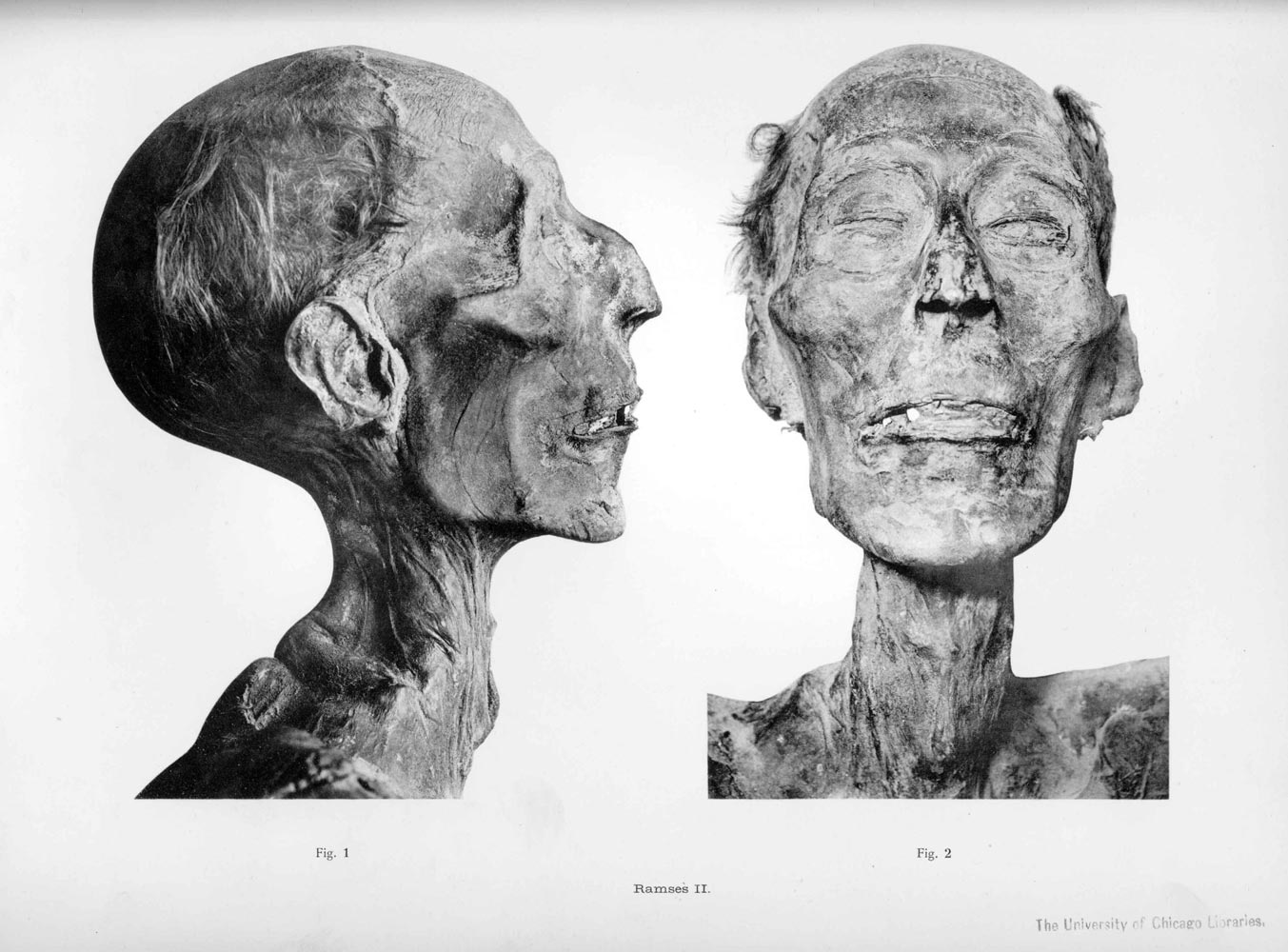
The most famous story about Ramses is as follows. Once, the Egyptian army fought against the Hittites, a people inhabiting modern Syria, Turkey, and Lebanon. In this battle, which took place near the Syrian city of Kadesh, Ramses’s army almost faced defeat and was nearly captured. The war ended in a draw, after which Egypt and the Hittite Kingdom concluded a peace treaty.
However, Ramses the Second managed to present the Battle of Kadesh as a triumphant victory for Egypt. He ordered massive bas-reliefs to be carved on the walls of temples in Luxor and Abu Simbel, depicting himself as a hero who personally drove the entire Hittite army to flight. One of the scenes shows Ramses riding a chariot, shooting a bow.
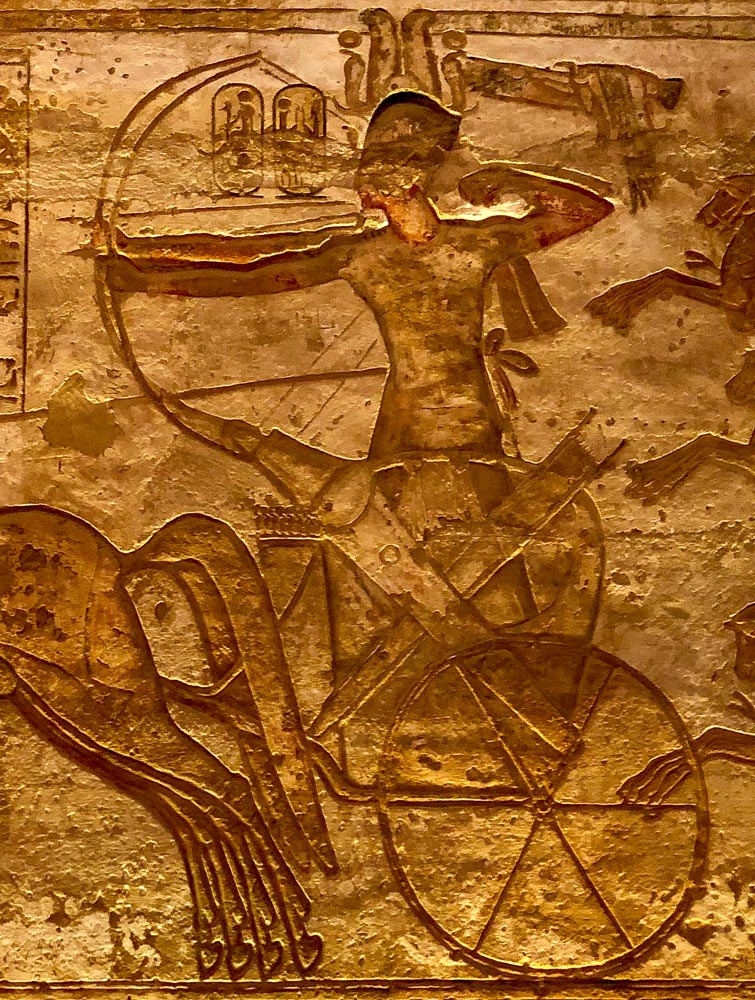
In another, he is spearing enemies with a spear. The Egyptians wrote an entire poem about the battle, stating that the pharaoh was abandoned by his troops but single-handedly defeated the enemies with the help of the god Amun.
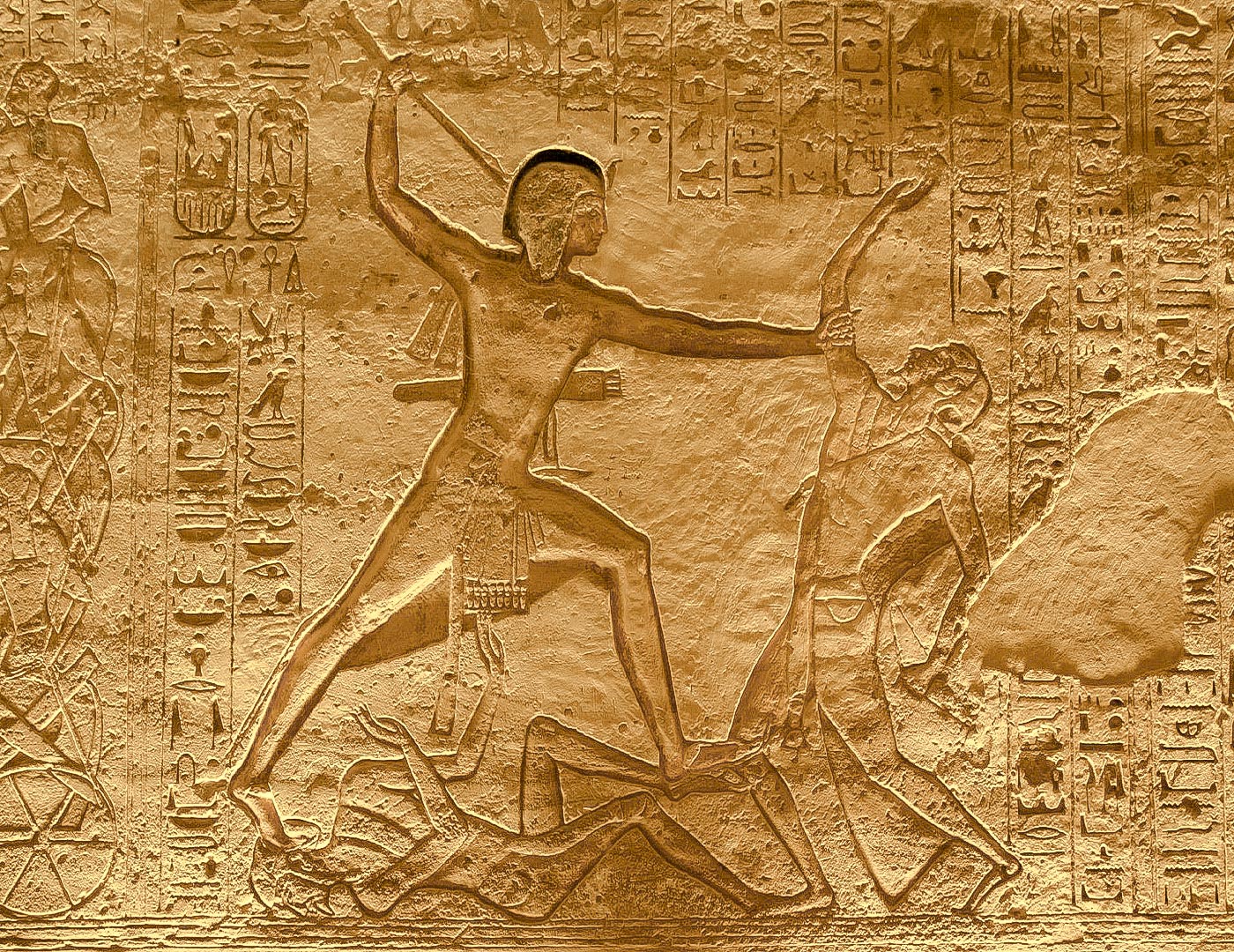
The personality cult of Ramses unfolded in full force. All of Egypt was literally filled with monuments to this pharaoh. By some estimates, their number reached two hundred, including statues, obelisks, and bas-reliefs, as well as temples of previous pharaohs that Ramses renamed in his honor.
The apex of Ramses’s cult became Abu Simbel.
After his “victory” over the Hittites, Ramses decided to immortalize his glory by building a grand temple that would house his own statue. For this project, he chose the southernmost point of Egypt — just before the start of Nubia. By placing the temple there, Ramses hoped to impress the Nubians with the might of his empire. And he succeeded. A temple of astonishing size was carved directly into a cliff found near the Second Cataract of the Nile.
Behind the cliff lies the Nubian desert, and from the outside, nothing gives away the presence of the temple.
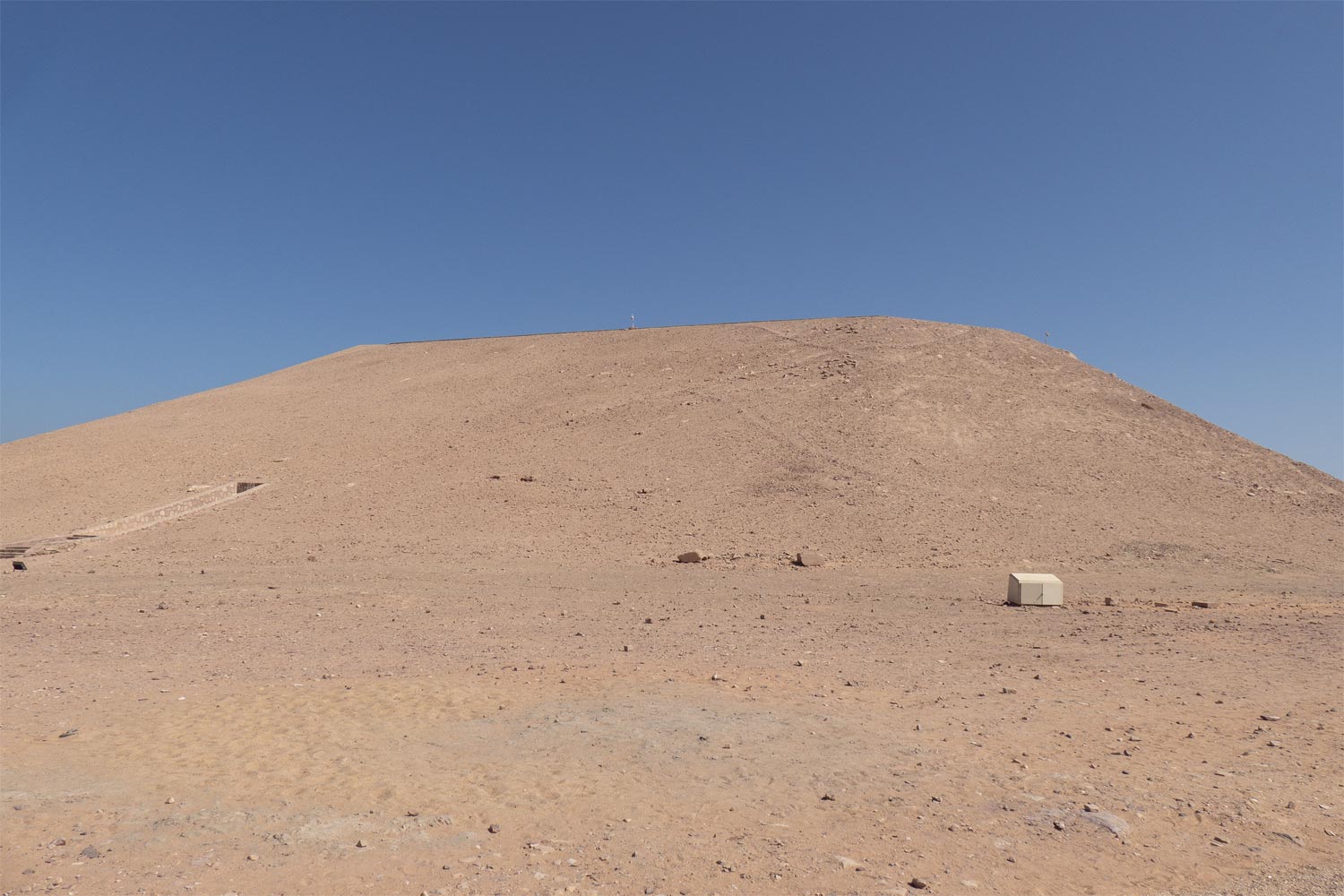
And it should not. According to Ramses’s plan, the temple faced the Nile, along which sailed merchant ships carrying gold from Nubia.
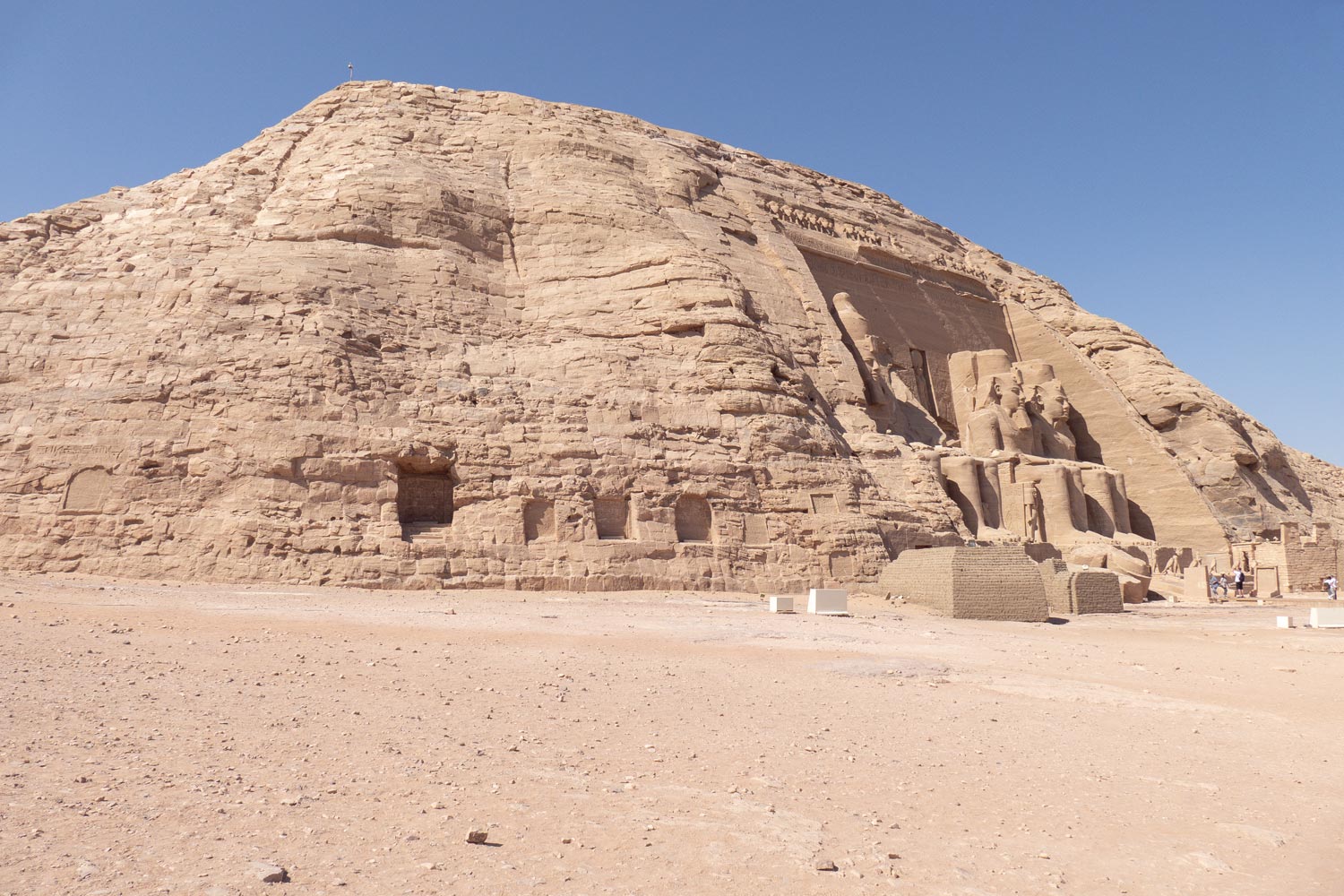
So what did the merchants see? Oh, they were presented with more than just a temple in a cliff. The fact is that Ramses ordered the installation of four gigantic statues at the entrance of the temple.
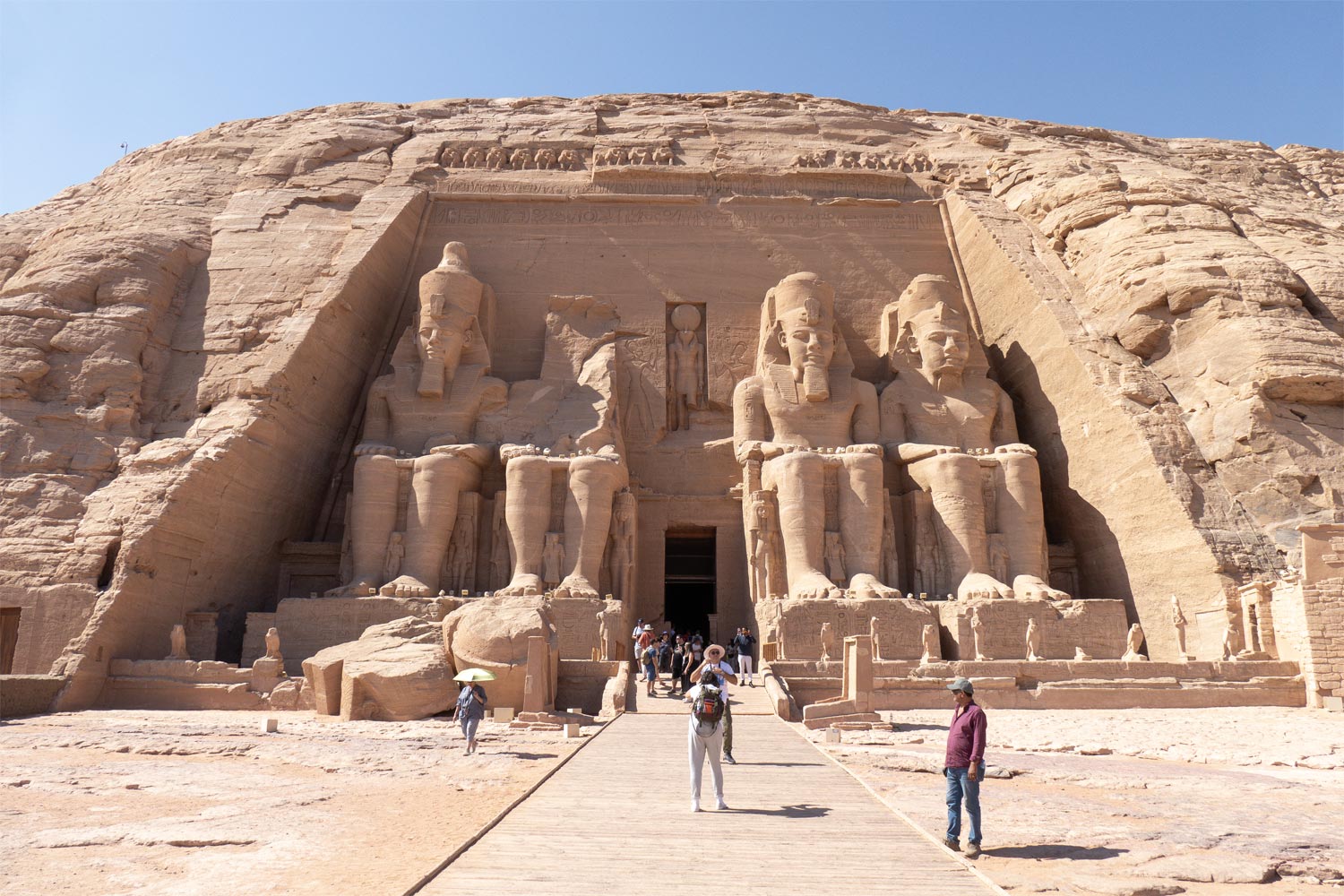
And all four statues bore the face of Ramses.
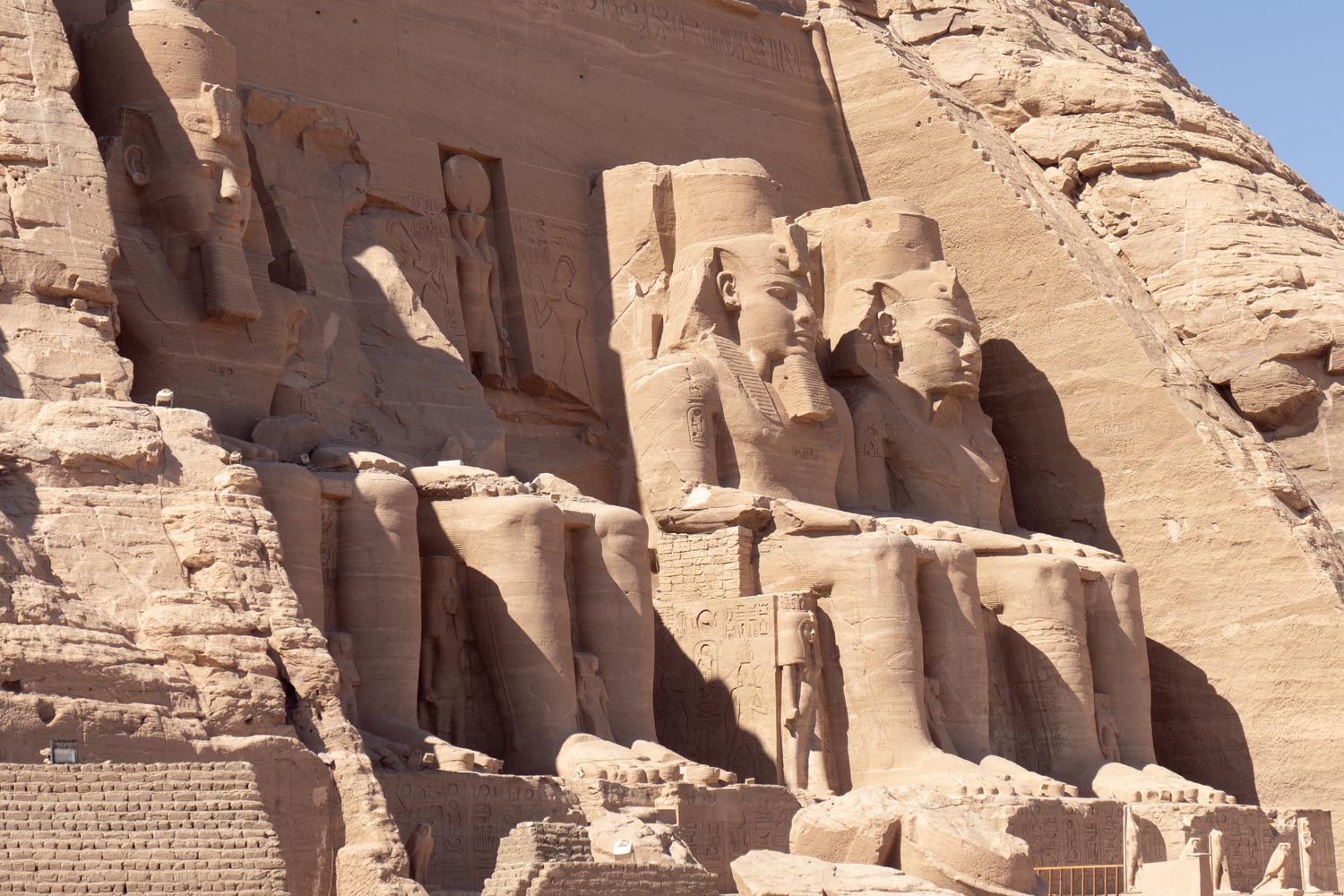
No written records have survived describing what faces bore the Nubians sailing past. Perhaps theirs, too, became like Ramses’s — frozen in awe.
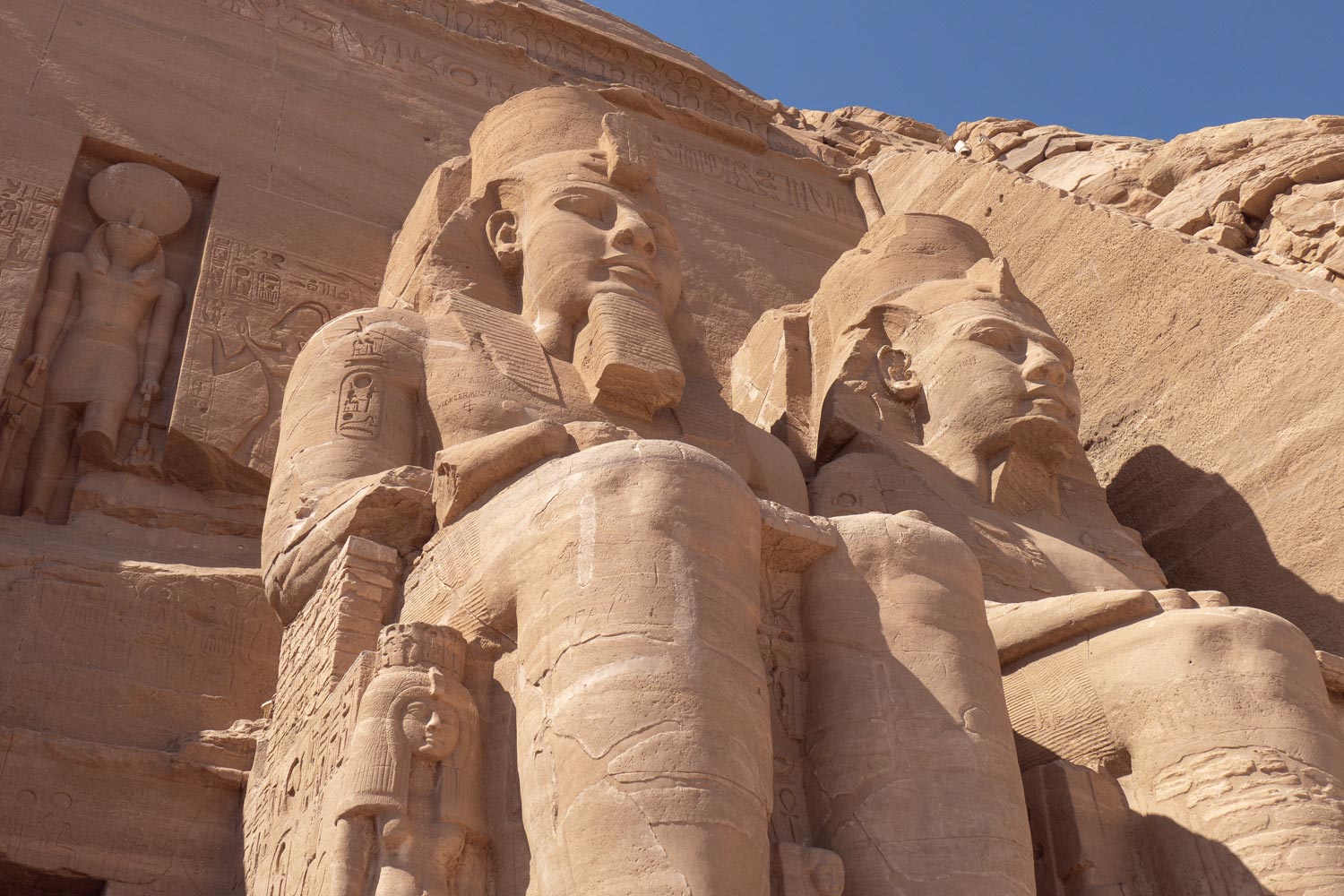
But what awaited the traveler who decided to enter the temple? In addition to dozens of bas-reliefs depicting Ramses single-handedly striking down the Hittite army, there were also four statues of Ramses on each side of the hall.
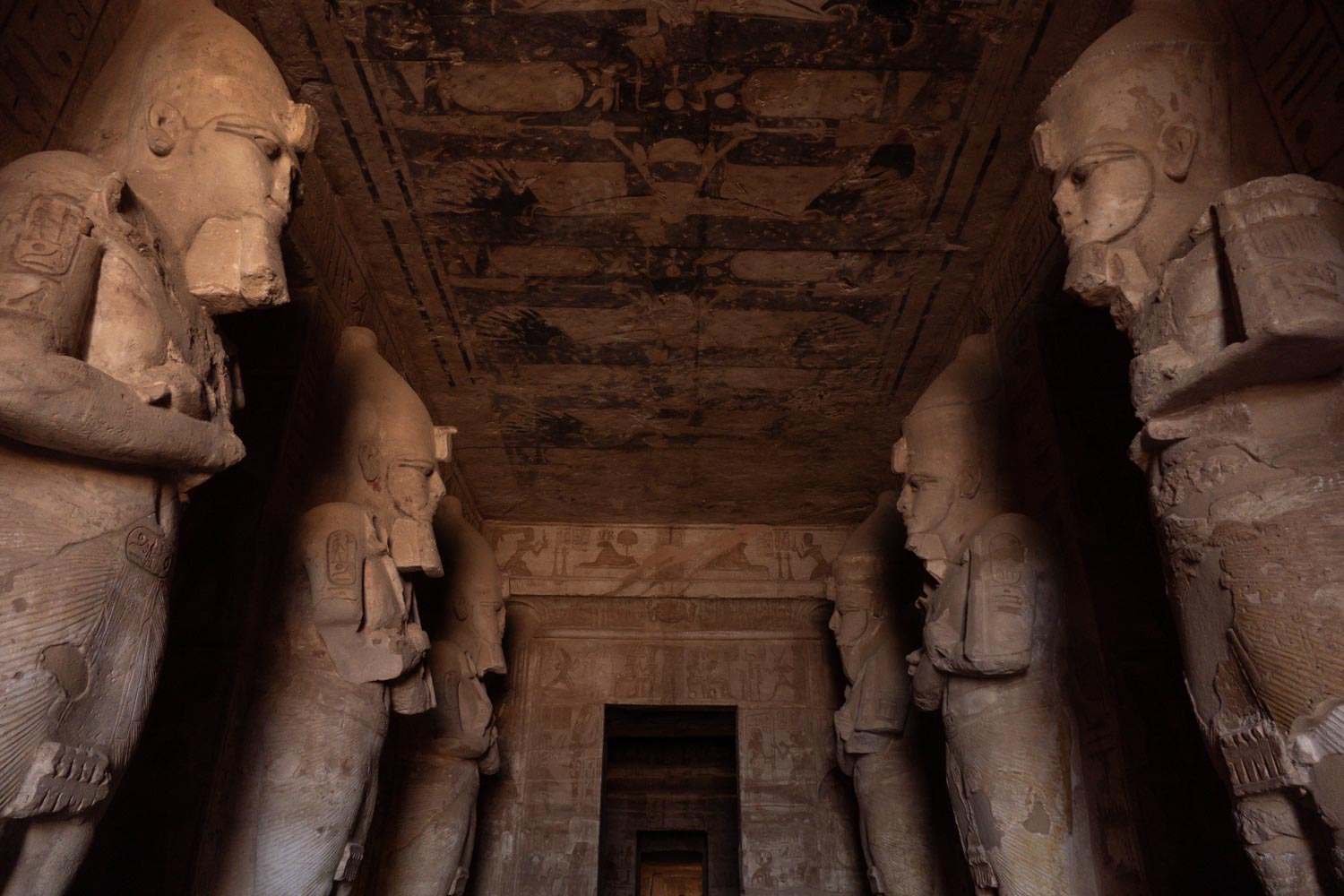
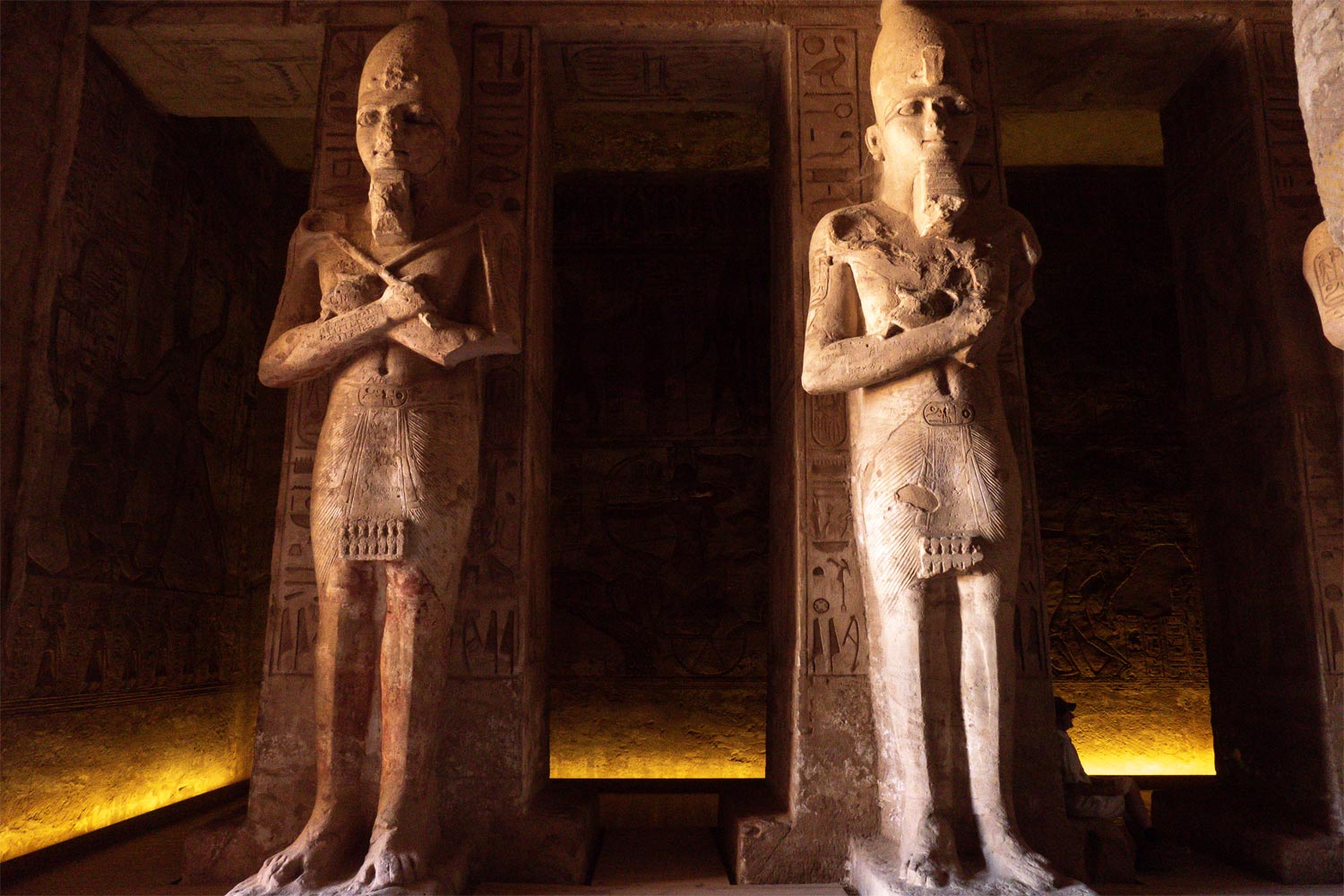
However, the main jewel of Abu Simbel is the four statues in the sanctuary room. Three are dedicated to the gods: Ptah, Amun, and Ra, and one, the third from the left, is dedicated to Ramses himself. Thus, this pharaoh equated himself with the gods!
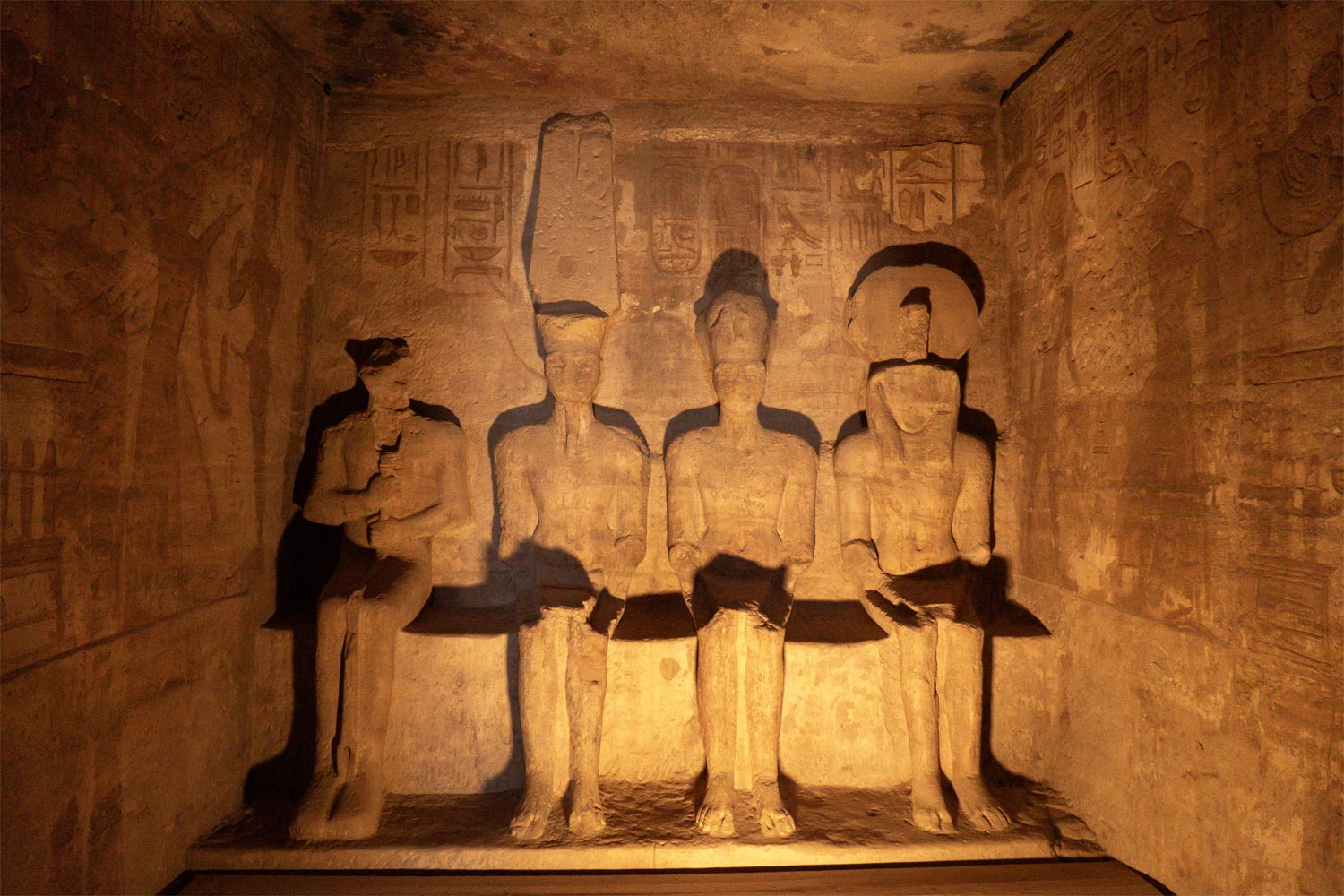
Overall, the idea was not exactly new. Many pharaohs equated themselves with the gods, but they typically did so after death. Ramses, however, deified himself during his lifetime and did so on a scale that no other pharaoh allowed themselves.
After all, the four statues of the gods are not just sitting in a dark room. Oh no, dear reader!
The temple at Abu Simbel is constructed in such a way that exactly twice a year, precisely at 6 a.m. on October 22 and February 22, a ray of sunlight enters at an angle to traverse the long corridor with statues of Ramses and falls directly onto the faces of the gods, illuminating them one by one.
The faces of Ra and Amun are illuminated for 6 minutes each. The face of Ramses himself is illuminated for 12 minutes. The face of Ptah is not illuminated at all, as he is the god of the dead.

Yes, in matters of PR, Ramses was far more successful than in his war with the Hittites. The solar festival at Abu Simbel is so incredible that it should be included among the wonders of the world instead of the pyramids. Yet that’s not all.
The temple that was built twice
In 1952, a revolution took place in Egypt that overthrew the monarchy. Gamal Abdel Nasser came to power and established a dictatorship in the country.
Shortly after coming to power, Nasser began implementing reforms in the country. He nationalized the Suez Canal (which led to a war with Britain), carried out agrarian reform, and embarked on large-scale construction projects.
One of Nasser’s main projects was the Aswan Dam. Near the city of Aswan, located downstream from Abu Simbel, there was already an old dam built at the beginning of the century that had become quite outdated. Nasser decided to build a new one in its place to provide Egypt with electricity and control the flooding of the Nile.
The dam was, of course, built for Nasser by the Soviet Union. And the dam, of course, achieved its intended goals: after its launch, it provided 50% of all electricity in Egypt.
At the same time, the dam led to the flooding of such a large area that nearly 100,000 people had to be relocated. A vast lake formed around the Nile, 480 kilometers long and 16 kilometers wide, which permanently buried many archaeological sites. Most of these were not of significant value, but eventually, the water began to encroach on Abu Simbel.
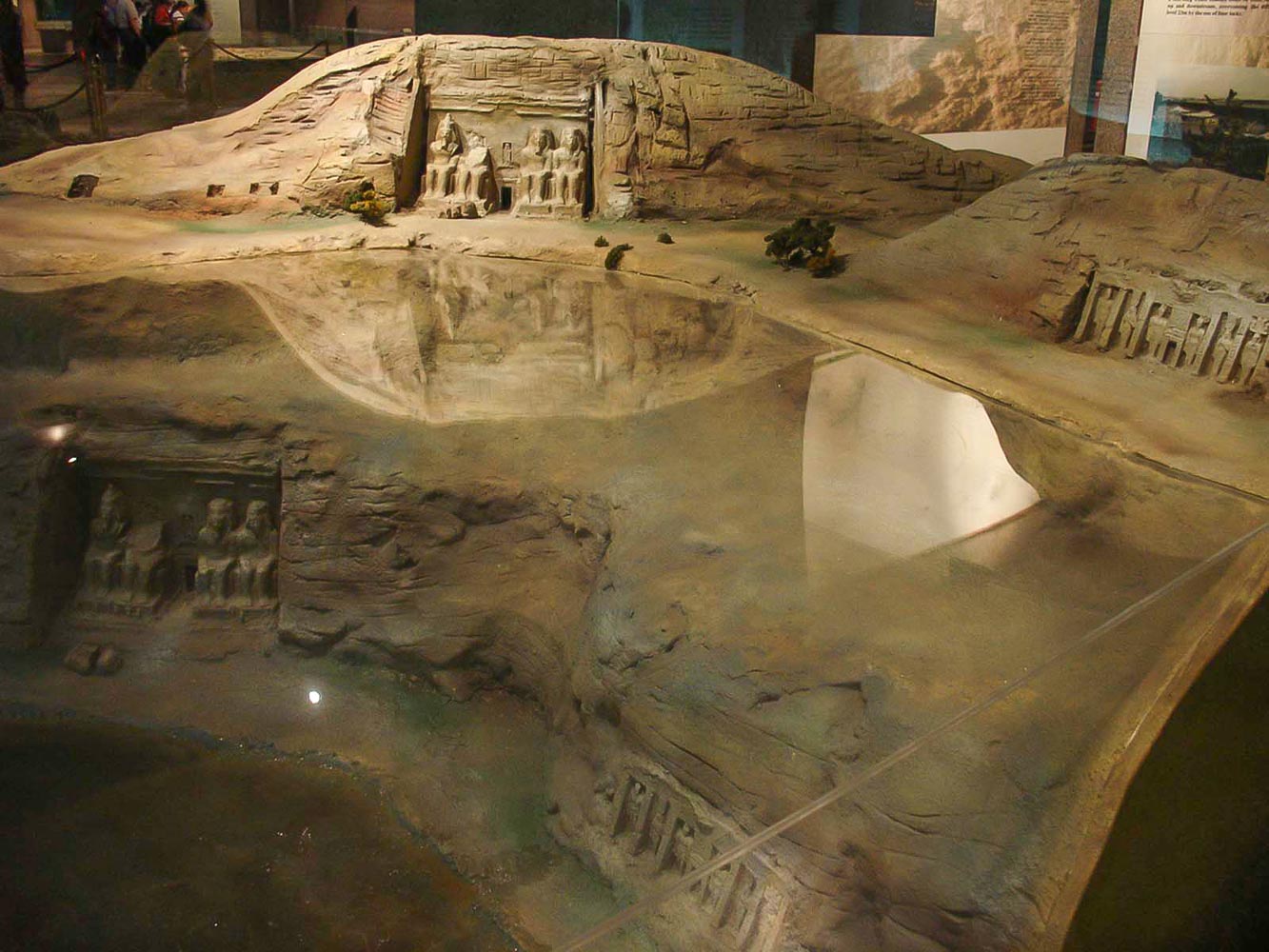
That’s when UNESCO raised the alarm. After considering several projects to save Abu Simbel, the commission made the following decision: to dismantle the statues along with the temple and the rock down to the foundation, move them 180 meters away from the Nile, and reassemble them. Madness? Totally!
And the temple was indeed dismantled. In 1964, it was cut into over a thousand blocks, each weighing up to thirty tons.
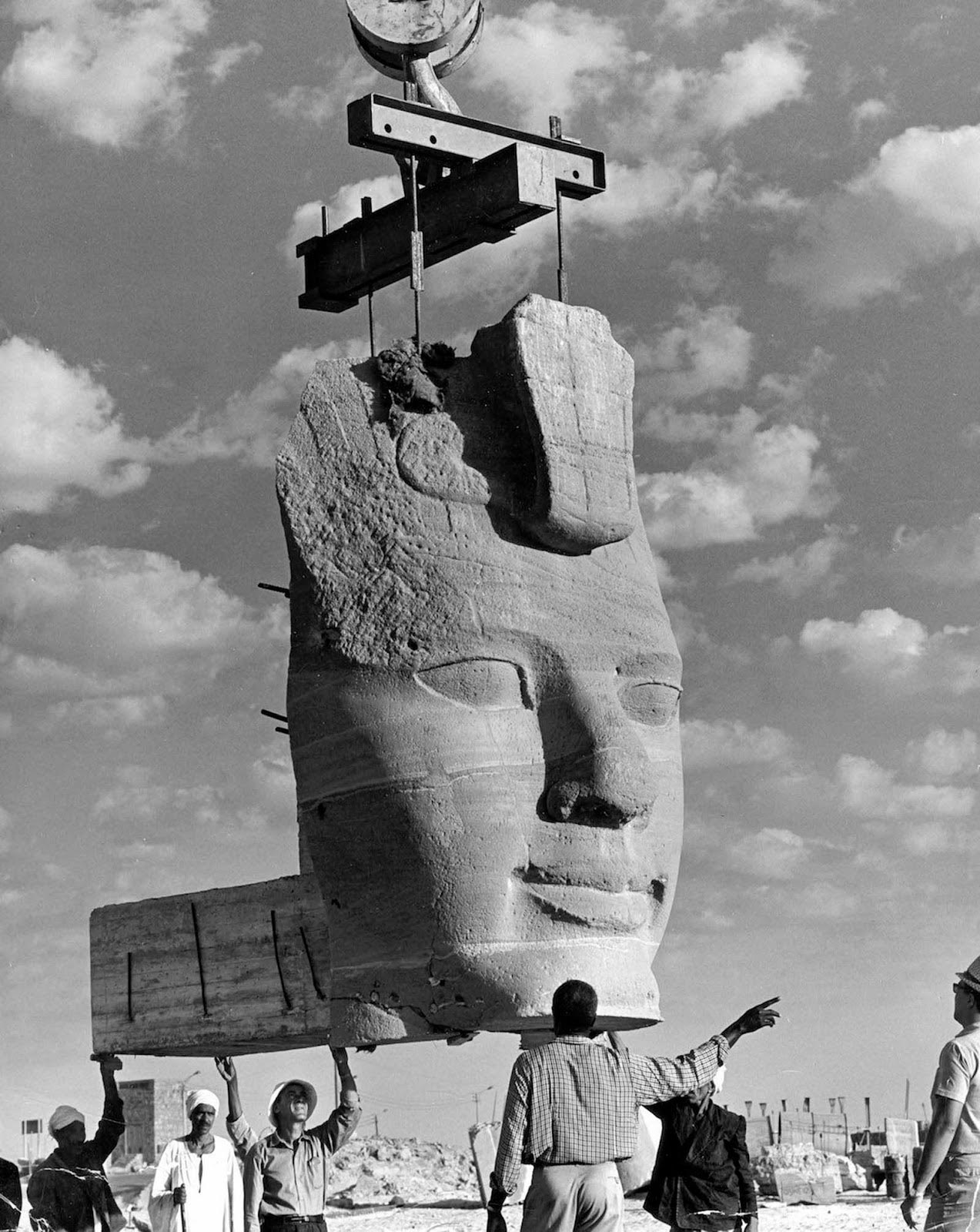
The same was done with the figures of Ramses.
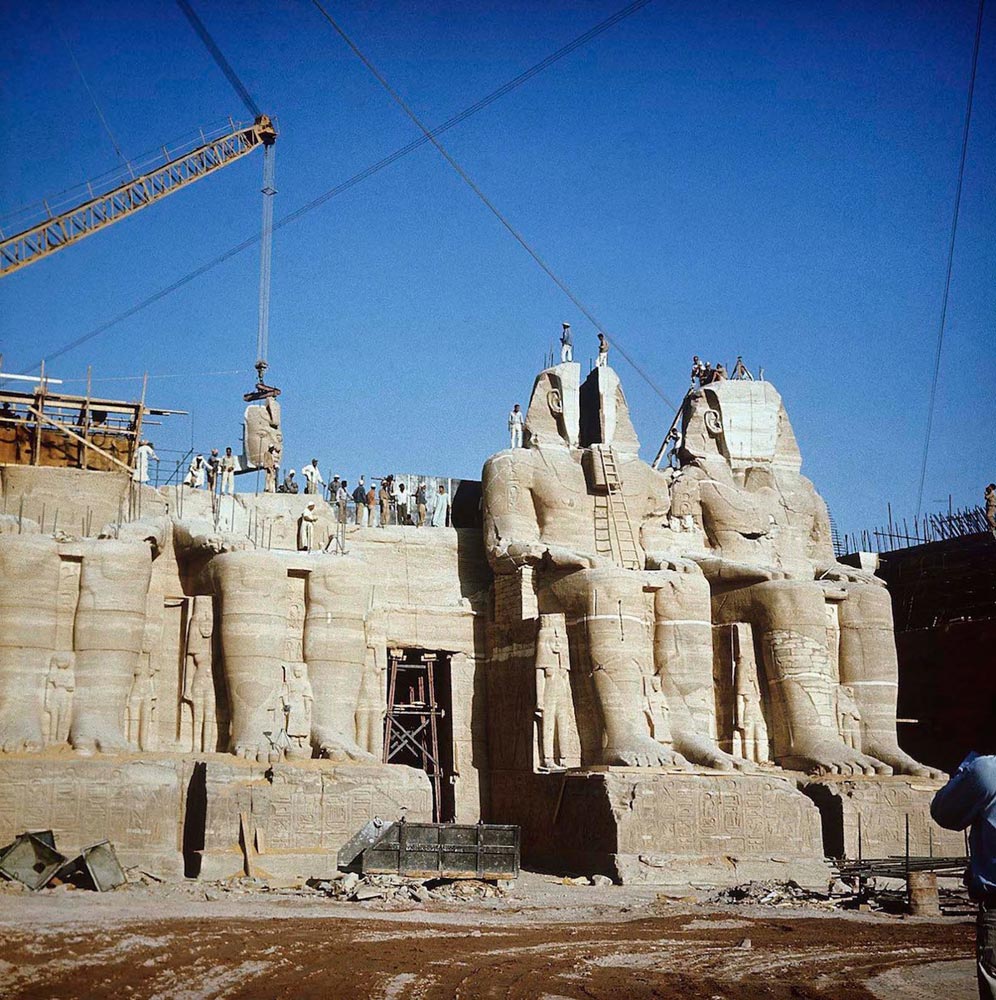
To ensure that the cuts were not visible on the most important part — the pharaoh’s face — the faces were carefully separated from the bodies and transported intact.
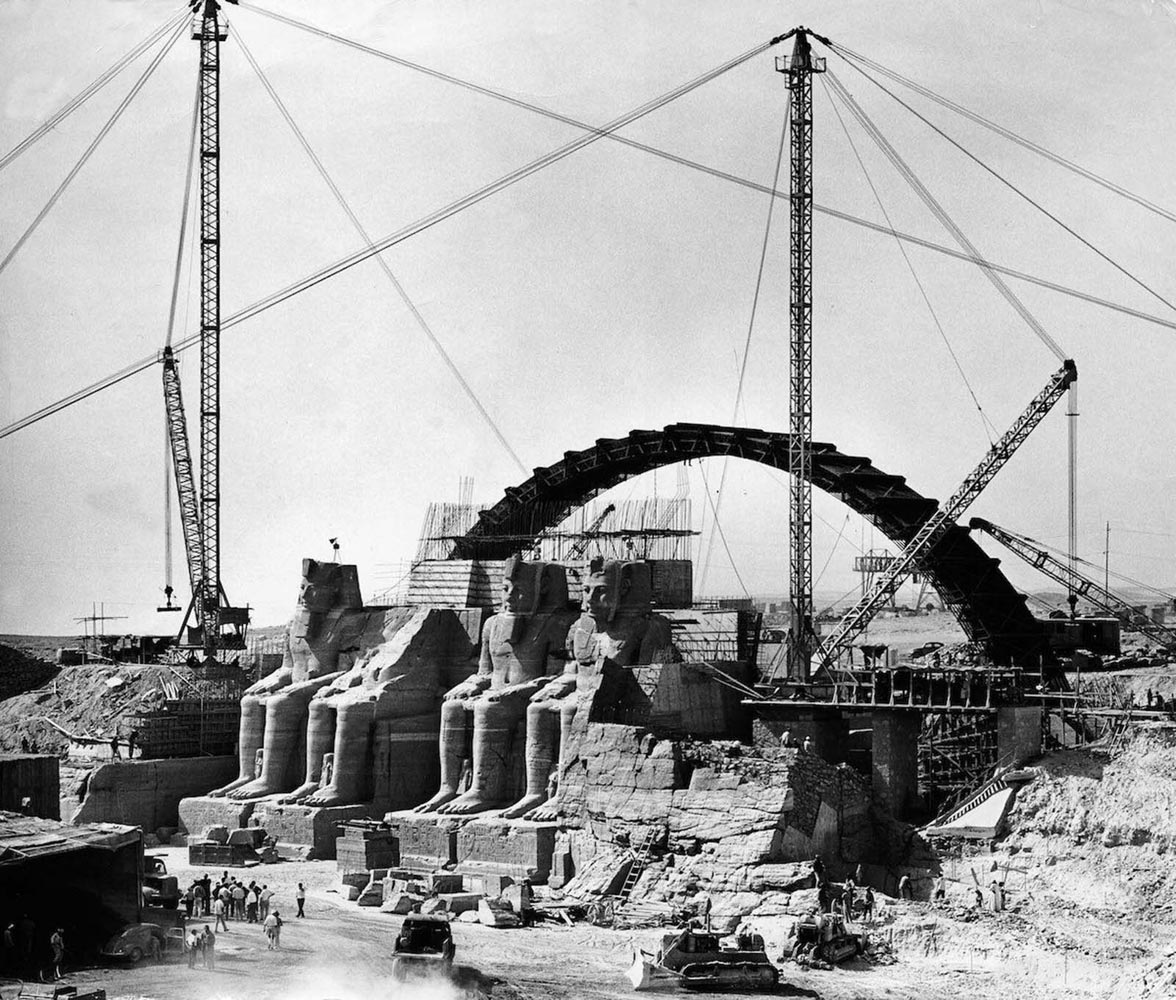
Fifty countries and two thousand people participated in the project. It was the largest and most unprecedented undertaking in world history. The whole world came together to save Abu Simbel — and succeeded.
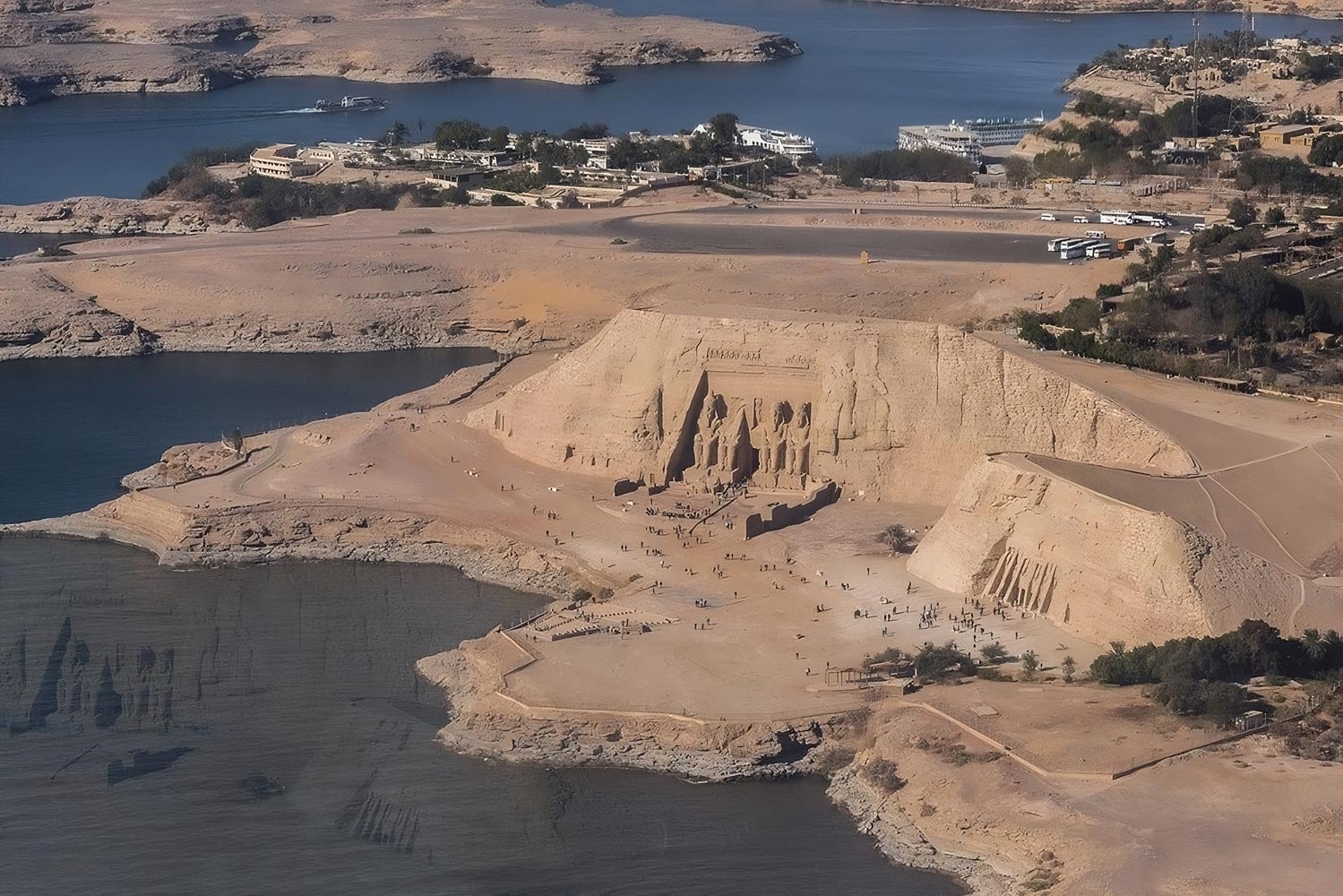
The site where Ramses II built the temple is now submerged. The temple now stands in a new location, safe from the water’s reach. It was reassembled with such precision that the cuts are indistinguishable.
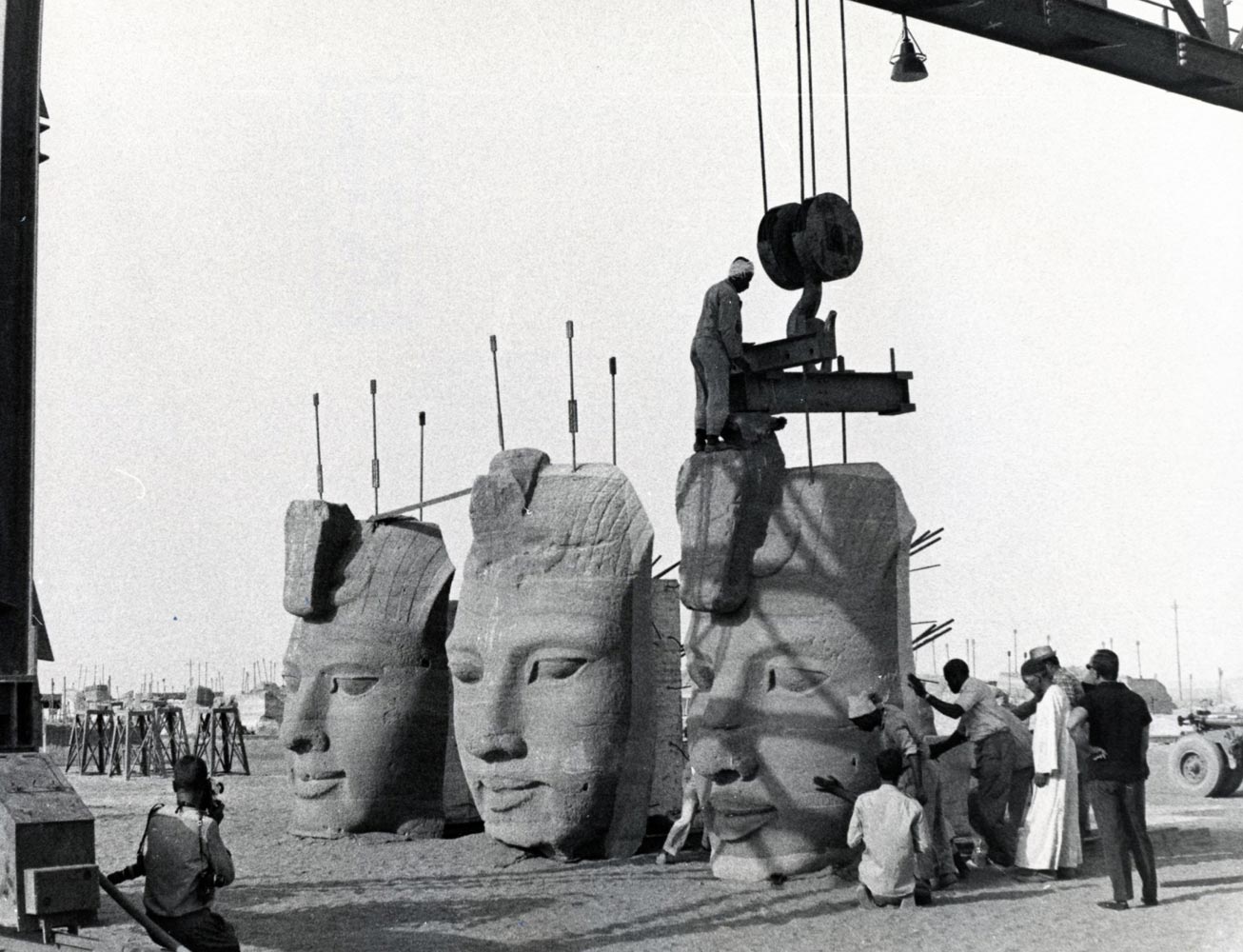
But most importantly, the temple was relocated at the same angle to the Sun. Therefore, exactly twice a year, precisely at 6 a.m. on October 22 and February 22, a ray of sunlight traverses the long corridor with statues of Ramses and falls on the faces of the gods.
As for Gamal Nasser, the artificial lake that now covers more than five thousand square kilometers is named after him. Lake Nasser. Imagine that.
